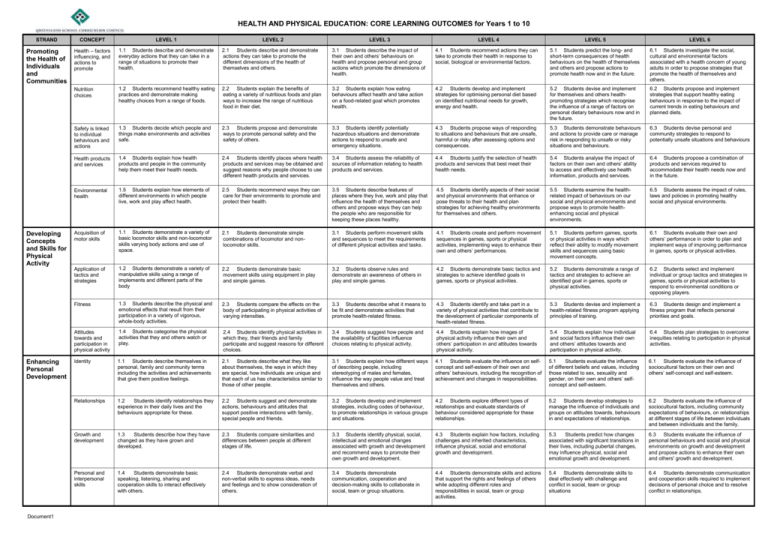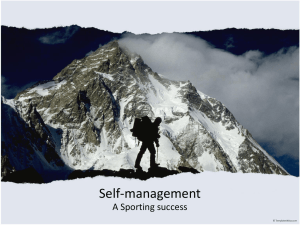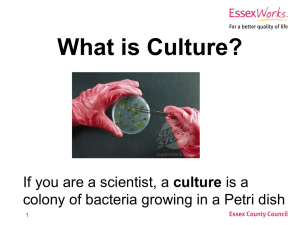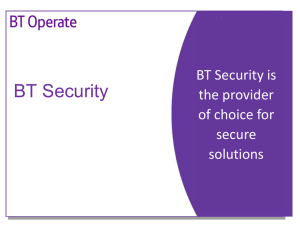Health and Physical Education: Core Learning Outcomes
advertisement

HEALTH AND PHYSICAL EDUCATION: CORE LEARNING OUTCOMES for Years 1 to 10 STRAND CONCEPT LEVEL 1 Promoting the Health of Individuals and Communities Health – factors influencing, and actions to promote 1.1 Students describe and demonstrate everyday actions that they can take in a range of situations to promote their health. 2.1 Students describe and demonstrate actions they can take to promote the different dimensions of the health of themselves and others. 3.1 Students describe the impact of their own and others’ behaviours on health and propose personal and group actions which promote the dimensions of health. 4.1 Students recommend actions they can take to promote their health in response to social, biological or environmental factors. 5.1 Students predict the long- and short-term consequences of health behaviours on the health of themselves and others and propose actions to promote health now and in the future. 6.1 Students investigate the social, cultural and environmental factors associated with a health concern of young adults in order to propose strategies that promote the health of themselves and others. Nutrition choices 1.2 Students recommend healthy eating practices and demonstrate making healthy choices from a range of foods. 2.2 Students explain the benefits of eating a variety of nutritious foods and plan ways to increase the range of nutritious food in their diet. 3.2 Students explain how eating behaviours affect health and take action on a food-related goal which promotes health. 4.2 Students develop and implement strategies for optimising personal diet based on identified nutritional needs for growth, energy and health. 5.2 Students devise and implement for themselves and others healthpromoting strategies which recognise the influence of a range of factors on personal dietary behaviours now and in the future. 6.2 Students propose and implement strategies that support healthy eating behaviours in response to the impact of current trends in eating behaviours and planned diets. Safety is linked to individual behaviours and actions 1.3 Students decide which people and things make environments and activities safe. 2.3 Students propose and demonstrate ways to promote personal safety and the safety of others. 3.3 Students identify potentially hazardous situations and demonstrate actions to respond to unsafe and emergency situations. 4.3 Students propose ways of responding to situations and behaviours that are unsafe, harmful or risky after assessing options and consequences. 5.3 Students demonstrate behaviours and actions to provide care or manage risk in responding to unsafe or risky situations and behaviours. 6.3 Students devise personal and community strategies to respond to potentially unsafe situations and behaviours Health products and services 1.4 Students explain how health products and people in the community help them meet their health needs. 2.4 Students identify places where health products and services may be obtained and suggest reasons why people choose to use different health products and services. 3.4 Students assess the reliability of sources of information relating to health products and services. 4.4 Students justify the selection of health products and services that best meet their health needs. 5.4 Students analyse the impact of factors on their own and others’ ability to access and effectively use health information, products and services. 6.4 Students propose a combination of products and services required to accommodate their health needs now and in the future. Environmental health 1.5 Students explain how elements of different environments in which people live, work and play affect health. 2.5 Students recommend ways they can care for their environments to promote and protect their health. 3.5 Students describe features of places where they live, work and play that influence the health of themselves and others and propose ways they can help the people who are responsible for keeping these places healthy. 4.5 Students identify aspects of their social and physical environments that enhance or pose threats to their health and plan strategies for achieving healthy environments for themselves and others. 5.5 Students examine the healthrelated impact of behaviours on our social and physical environments and propose ways to promote healthenhancing social and physical environments. 6.5 Students assess the impact of rules, laws and policies in promoting healthy social and physical environments. Acquisition of motor skills 1.1 Students demonstrate a variety of basic locomotor skills and non-locomotor skills varying body actions and use of space. 2.1 Students demonstrate simple combinations of locomotor and nonlocomotor skills. 3.1 Students perform movement skills and sequences to meet the requirements of different physical activities and tasks. 4.1 Students create and perform movement sequences in games, sports or physical activities, implementing ways to enhance their own and others’ performances. 5.1 Students perform games, sports or physical activities in ways which reflect their ability to modify movement skills and sequences using basic movement concepts. 6.1 Students evaluate their own and others’ performance in order to plan and implement ways of improving performance in games, sports or physical activities. Application of tactics and strategies 1.2 Students demonstrate a variety of manipulative skills using a range of implements and different parts of the body 2.2 Students demonstrate basic movement skills using equipment in play and simple games. 3.2 Students observe rules and demonstrate an awareness of others in play and simple games. 4.2 Students demonstrate basic tactics and strategies to achieve identified goals in games, sports or physical activities. 5.2 Students demonstrate a range of tactics and strategies to achieve an identified goal in games, sports or physical activities. 6.2 Students select and implement individual or group tactics and strategies in games, sports or physical activities to respond to environmental conditions or opposing players. Fitness 1.3 Students describe the physical and emotional effects that result from their participation in a variety of vigorous, whole-body activities. 2.3 Students compare the effects on the body of participating in physical activities of varying intensities. 3.3 Students describe what it means to be fit and demonstrate activities that promote health-related fitness. 4.3 Students identify and take part in a variety of physical activities that contribute to the development of particular components of health-related fitness. 5.3 Students devise and implement a health-related fitness program applying principles of training. 6.3 Students design and implement a fitness program that reflects personal priorities and goals. Attitudes towards and participation in physical activity 1.4 Students categorise the physical activities that they and others watch or play. 2.4 Students identify physical activities in which they, their friends and family participate and suggest reasons for different choices. 3.4 Students suggest how people and the availability of facilities influence choices relating to physical activity. 4.4 Students explain how images of physical activity influence their own and others’ participation in and attitudes towards physical activity. 5.4 Students explain how individual and social factors influence their own and others’ attitudes towards and participation in physical activity. 6.4 Students plan strategies to overcome inequities relating to participation in physical activities. Identity 1.1 Students describe themselves in personal, family and community terms including the activities and achievements that give them positive feelings. 2.1 Students describe what they like about themselves, the ways in which they are special, how individuals are unique and that each of us has characteristics similar to those of other people. 3.1 Students explain how different ways of describing people, including stereotyping of males and females, influence the way people value and treat themselves and others. 4.1 Students evaluate the influence on selfconcept and self-esteem of their own and others’ behaviours, including the recognition of achievement and changes in responsibilities. 5.1 Students evaluate the influence of different beliefs and values, including those related to sex, sexuality and gender, on their own and others’ selfconcept and self-esteem. 6.1 Students evaluate the influence of sociocultural factors on their own and others’ self-concept and self-esteem. Relationships 1.2 Students identify relationships they experience in their daily lives and the behaviours appropriate for these. 2.2 Students suggest and demonstrate actions, behaviours and attitudes that support positive interactions with family, special people and friends. 3.2 Students develop and implement strategies, including codes of behaviour, to promote relationships in various groups and situations. 4.2 Students explore different types of relationships and evaluate standards of behaviour considered appropriate for these relationships. 5.2 Students develop strategies to manage the influence of individuals and groups on attitudes towards, behaviours in and expectations of relationships. 6.2 Students evaluate the influence of sociocultural factors, including community expectations of behaviours, on relationships at different stages of life between individuals and between individuals and the family. Growth and development 1.3 Students describe how they have changed as they have grown and developed. 2.3 Students compare similarities and differences between people at different stages of life. 3.3 Students identify physical, social, intellectual and emotional changes associated with growth and development and recommend ways to promote their own growth and development. 4.3 Students explain how factors, including challenges and inherited characteristics, influence physical, social and emotional growth and development. 5.3 Students predict how changes associated with significant transitions in their lives, including pubertal changes, may influence physical, social and emotional growth and development. 6.3 Students evaluate the influence of personal behaviours and social and physical environments on growth and development and propose actions to enhance their own and others' growth and development. Personal and interpersonal skills 1.4 Students demonstrate basic speaking, listening, sharing and cooperation skills to interact effectively with others. 2.4 Students demonstrate verbal and non-verbal skills to express ideas, needs and feelings and to show consideration of others. 3.4 Students demonstrate communication, cooperation and decision-making skills to collaborate in social, team or group situations. 4.4 Students demonstrate skills and actions that support the rights and feelings of others while adopting different roles and responsibilities in social, team or group activities. 5.4 Students demonstrate skills to deal effectively with challenge and conflict in social, team or group situations 6.4 Students demonstrate communication and cooperation skills required to implement decisions of personal choice and to resolve conflict in relationships. Developing Concepts and Skills for Physical Activity Enhancing Personal Development Document1 LEVEL 2 LEVEL 3 LEVEL 4 LEVEL 5 LEVEL 6 Document1







